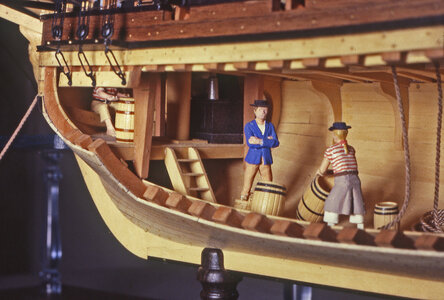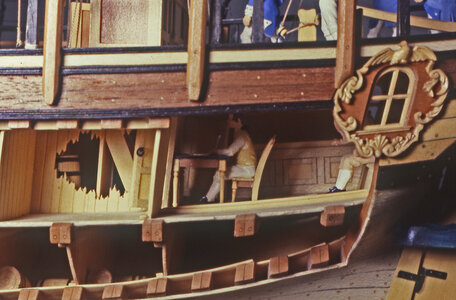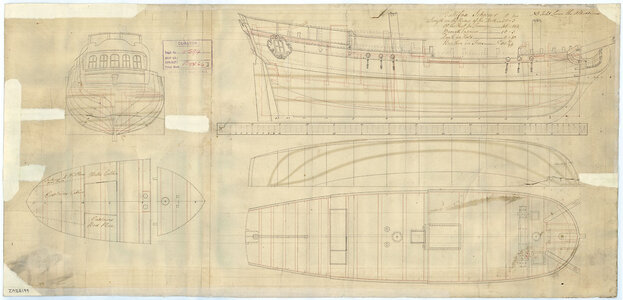- Joined
- May 26, 2023
- Messages
- 23
- Points
- 48

I've been referring to Harold Hahn's depictions of HMS Halifax (1768) for my 3d reconstruction, but when it comes to recreating the interior I have some concerns about how he depicted the hold and stores:

He shows the hold as a large open space with plenty of headroom, no ballast, and no cabins or living quarters for the crew (aside from the officers at the stern). The video tour of the HMS Sultana replica says that this space would have been divided on Sultana by a deck, separating the crew's cabins from the stores below. Hahns also shows only a single ladder leading down from the weatherdeck, the one below the companionway, despite also showing other suitably sized hatches amidships and at the fore. This seems impractical to me:

Even more confusing to me is that he shows barrels stored under the stern cabins in what appear to be watertight compartments. How could these stores be accessed?

Given the absence of sails and ropes being stored below deck, and the paltry number of barrels, I'm assuming that Hahn wanted a clean, uncluttered model for his (undeniably gorgeous) display and took some liberties with the layout. However it's equally likely that I'm a total noob who knows nothing about how ships actually work.
Help? I'd like to make my model as authentic a depiction of an actual working schooner as possible.

He shows the hold as a large open space with plenty of headroom, no ballast, and no cabins or living quarters for the crew (aside from the officers at the stern). The video tour of the HMS Sultana replica says that this space would have been divided on Sultana by a deck, separating the crew's cabins from the stores below. Hahns also shows only a single ladder leading down from the weatherdeck, the one below the companionway, despite also showing other suitably sized hatches amidships and at the fore. This seems impractical to me:

Even more confusing to me is that he shows barrels stored under the stern cabins in what appear to be watertight compartments. How could these stores be accessed?

Given the absence of sails and ropes being stored below deck, and the paltry number of barrels, I'm assuming that Hahn wanted a clean, uncluttered model for his (undeniably gorgeous) display and took some liberties with the layout. However it's equally likely that I'm a total noob who knows nothing about how ships actually work.
Help? I'd like to make my model as authentic a depiction of an actual working schooner as possible.





